When it comes to protecting and laying electrical wiring, long-lasting and reliable materials must be used. In recent times, HDPE electric conduit pipes have come to the limelight in the industry for delivering some of the best performances in various areas with their adaptability. This article therefore provides insight into the main benefits of HDPE conduit pipes, such as great flexibility, corrosion resistance, and cost-efficiency, and their uses in sectors vital for construction, telecommunications, and renewable energy. If you are an engineer, contractor, or project manager, you will benefit from understanding the benefits and applications of HDPE conduit pipes for making an informed decision about your next infrastructure project.
Understanding HDPE Conduit Pipes
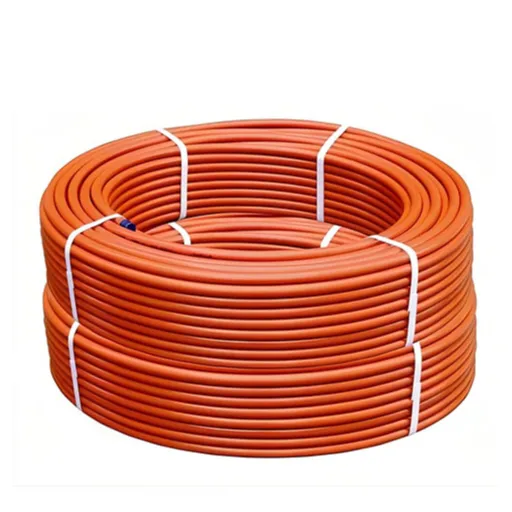
What is HDPE Pipe?
HDPE pipe is a type of flexible plastic pipe made out of thermoplastic material derived from petroleum. Being very highly durable and adaptable, the HDPE pipe has found uses in various applications, such as water supply, sewage systems, and electrical conduit. In many instances, its ability to give good pressure resistance while still being light is a very beneficial feature.
One feature that makes HDPE pipe singular is that it is corrosion-resistant and cannot suffer chemical degradation. Unlike materials such as steel or iron, HDPE does not rust upon contact with water, chemicals, or any harsh environment. So, it means more service life, which means less repair or maintenance, and ultimately less lifecycle costs.
On the other hand, HDPE pipes have great design flexibility. HDPE pipes can essentially be made in any diameter or length, and two ends can be joined together to create a leak-proof joint through heat fusion. This capability dramatically increases the reliability of a fluid or wire being conveyed over a lengthy distance, without compromising the system or cable. Because of these characteristics, HDPE pipes have found acceptance in the telecom industry, irrigation systems, and renewable energy.
Key Features of HDPE Electrical Conduits
HDPE electrical conduits provide strength and durability in adverse environmental conditions; these are always their preferred choice when protecting electrical wiring in different applications. Having ultimate chemical resistance, they last through corrosive environments and never degrade in the course of time. Up to temperature extremes, further temperature fluctuations make them very suitable for applications outdoors and underground.
Another trait of HDPE electrical conduits is that they are lightweight, which aids transportation and installation. Unlike conventional metal conduits, HDPE conduits require little resource management and do not compromise on structural strength. Hence, labor costs are low, thus saving time on project happenings and making the project of greater efficient.
HDPE conduits are widely recognized for their flexibility and adaptability. They are manufactured as coils, permitting continuous runs with no joints that can then become leakage or damage points. Plus, there are very few maintenance requirements for these conduits to ensure proper performance over time, thereby presenting the most economical and eco-friendly option for electrical infrastructure projects. Together, these brilliant features make HDPE conduits practical to cater to the current-day demands of industries.
Benefits of Using HDPE for Cable Protection
HDPE (High-Density Polyethylene) has been widely speculated to be one of the finer materials for cable protection because of a variety of properties coupled with its long-term performance advantage.
🛡️ High Durability and Corrosion Resistance
HDPE conduits are equipped with corrosion resistance, chemical resistance, and resistance to environmental factors like UV radiation, moisture, etc. Such qualities would make them perfectly suitable for laying underground or through any kind of harsh environmental obstructions to ensure proper cable protection over a long period.
💪 Flexible and Impact Resistant
Flexibility offers the advantage of bending under stress and without breaking, so fewer joints or fittings are required. This characteristic also resists impacts and vibrations, and hence it is suitable under heavy loads of traffic or seismic zones.
⚡ Lightweight and Easy Installation
HDPE is also lightweight, making it simple to move, manipulate, and install compared to metals that need heavy equipment. Such an easy and light-handed way of working considerably reduces labor costs and installation time, along with reduced heavy machinery requirements at the construction site.
🌱 Eco-Worthy and Sustainable Technology
Another benefit of HDPE is that it is recyclable and causes minimal environmental impact compared to other materials. Another environmentally sustainable quality is its long service life, meaning that fewer replacements are made, thereby reducing material waste.
🔌 Excellent Insulation Properties
Good insulation is provided by HDPE; hence, it greatly reduces the possibility of electrical faults or interference with such properties. This serves as protection against sensitive electrical and data cables in city or rural applications.
These qualities are all that make HDPE an affordable, efficient, and environmentally-responsible choice for contemporary cable protection systems.
Applications of HDPE Electrical Conduit
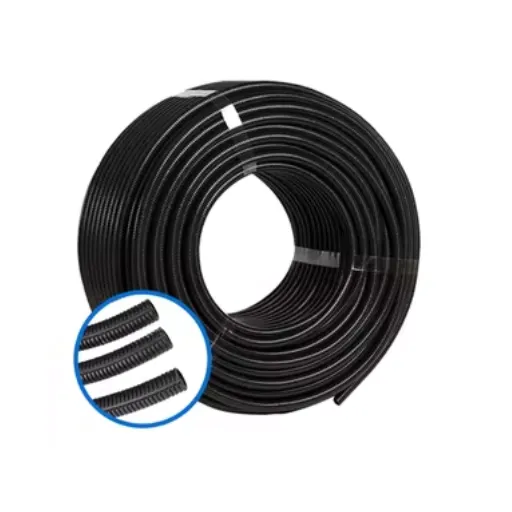
Use in Electrical Installations
HDPE electrical conduit finds general application in various electrical installations due to its durability, flexibility, resistance to chemicals, and sound insulation. The five classic cases in which it is essential are:
- Underground Electrical Distribution: HDPE conduits are put under service in underground electrical systems; thus, they provide protection from adverse weather and from acts of nature like soil movement or any possible mechanical damage. Being resistant to corrosion translates into almost zero maintenance throughout the whole lifespan of 50 years or more.
- Telecommunications Cable Protection: These conduits are perfect for high-speed data cables and telecommunication cable protection. By allowing more than one cable inside a duct, they enhance the scalability of the installation to deal with rising data demand while keeping down installation prices.
- Power Transmission Lines: HDPE conduits play an integral role in protecting medium and high-voltage power cables. Their non-conductive properties also ensure weather resistance-o-wing to which in conditions of humidity, heavy rains, or temperature extremes, their performance remains unaltered.
- Renewable Energy Systems: HDPE conduits find high utility in solar farms and wind turbine installations for safely routing electrical connections. Their UV resistance and flexibility are simply matched in outdoor and variable installations, while operational integrity lasts for several decades.
- Industrial Settings and Smart Grids: These conduits hold electrical cables in industrial installations and smart grids, where complex networks require the most reliable kinds of conduits to be non-corrosive and easy to modify. They withstand exposure to the most corrosive chemicals and heavy-machinery environments, thus guaranteeing the highest safety and reliability levels.
These various applications show the versatility and technical aspects that HDPE electrical conduit has to offer in contemporary transmission infrastructure.
Telecommunications Applications
HDPE conduits are considered integral to the modern telecommunications infrastructure because of their presence as an extension of durability, flexibility, and resistance to environmental parameters. Their non-corrosive properties and easy installation techniques make them adaptable and most preferable for the safeguarding of communication cables in almost every conceivable scenario. The following are the five major telecommunications applications where HDPE conduits have shown their technical superiority:
- 📡 Fiber Optic Cable Protection: HDPE conduits protect fiber optic cables physically from damage and ,in addition, guard from UV rays and chemical degradation. They are lightweight and flexible, so it is easy to install them on difficult terrains.
- 🌍 Sub-terranean Cable Deployment: These conduits are generally used to bury telecommunications cables for sub-surface installations where their high tensile strength supports resisting external pressures from the soil and construction activity.
- 📶 Long-Distance Communication Networks: HDPE conduits are used in long-distance data transmission systems, where their light weight and seamless manageability allow efficient implementation over distances.
- ☁️ Aerial Cabling Solutions: HDPE conduits prove to be good for an aerial cable installation as they guard against extreme weather conditions and environmental stressors such as wind or ice.
- 🏢 Data Center Connectivity: Inside data centers, telecommunications infrastructure uses HDPE conduits to route and organize cabling systems, which ensures operations run smoothly and protects them from interference or external damage.
These sorts of applications reflect how HDPE conduits contribute to establishing a resilient and future-proof telecommunication network. In terms of their technical properties, these conduits ensure systems are protected from damage so that cables remain intact and the systems are highly efficient and long-lived.
Underground Cable Protection
Underground cable protection is a critical aspect of ensuring communication and power infrastructures are reliable, durable, and safe. Being the conduit, HDPE acts as a barrier from environmental stress, physical attack, or chemical attack that might be put upon cables. Here are the five main features and benefits of using HDPE conduits specifically for underground protection of cables:
🛡️ High Durability Against External Forces
HDPE conduits are extremely resistant to impact and crushing forces. They protect the cables from being crushed by heavy loads or from lateral movement of soil. They can withstand a pressure of 500 PSI, thereby making them suitable for installation even on roads under heavy vehicular traffic or performing any construction activity.
🧪 Corrosion and Chemical Resistance
These conduits have a high ability to resist corrosion caused by chemical agents from the soil or moisture and other environmental factors. In contrast to metal conduits, HDPE remains unaltered by rust and chemical degradation, thus further extending the life of the cables inside.
🔧 Flexibility and Adaptability
HDPE conduits always remain flexible enough to shift with the ground rather than crack or break. This is an advantage for an area prone to seismic activity or a very high seasonal temperature difference.
⚡ Ease of Installation
Being very lightweight and being able to be coiled in long lengths, HDPE conduits are installed underground much faster than other materials. This reduces labor costs and the downtime during the instance.
💧 Superior Moisture Resistance
Being non-porous and water-resistant, water cannot enter the HDPE, assuring the cables remain dry and are safeguarded against short-circuit or performance degradation scenarios. This makes sure that utilities in wet or flood-prone areas never remain without power.
Together, these attributes make HDPE conduits indispensable for the protection of underground cables, providing reliable performance and long-term cost efficiency for a wide array of applications.
Installation of HDPE Conduit Pipes
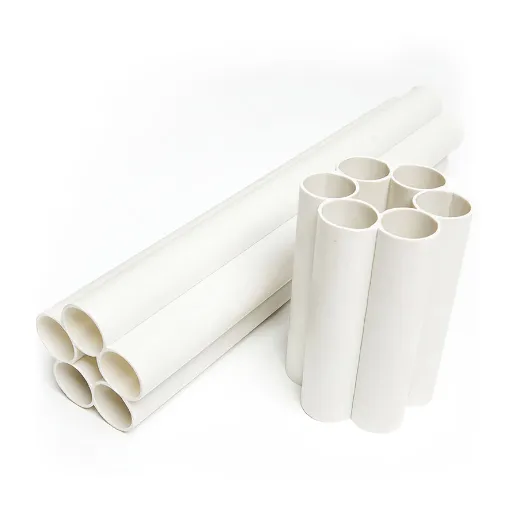
Step-by-Step Installation Process
-
Step 1: Site Preparation
First, the guide commences by assessing the installation site to ensure its suitability for underground cable protection. Select soil testing to check for its stability and drainage capacity. Clear obstructions, debris, or vegetation that may impede excavation.
-
Step 2: Trenching
Excavate a trench according to the depth and width required, conforming to industrial standards and local laws. The trench should be sufficiently deep to allow mechanical protection of the conduit and thus not interfere with existing utilities. Refer to engineering drawings or utility maps for the best location.
-
Step 3: Bedding Layer Installation
Create a stable bedding layer at the bottom of the trench. Employ a layer of clean sand or fine gravel (about 4 to 6 inches thick) to support and cushion the HDPE conduit. The layerbar should be compacted evenly to avoid displacement during the conduit installation.
-
Step 4: Conduit Pipe Laying
Lay HDPE conduit pipes along the trench, making sure that these are correctly aligned to avoid bending and stress. For joining, heat fusion or mechanical couplers shall be used, as per the manufacturer’s recommendations, to ensure a watertight and mechanically strong joint. Spacers should be provided in the event of more than one conduit installation to ensure constant spacing and alignment.
-
Step 5: Backfilling
The conduit shall be covered with a layer of fine sand or backfilling material to protect the pipes from sharp objects or pressure. This layer shall be gently compacted by hand to provide stability, but not enough pressure to damage the conduit. Then, soil shall be filled into the trench in layers and compacted properly to bringit back to the original ground level.
-
Step 6: Testing and Inspection
Inspection needs to cover from receipt through installation, verifying alignment integrity, joint sealing, and system fitness for use. When deemed appropriate, pressure testing for a leakproof connection can be carried out. Upon the final installation, compliance with the applicable codes and standards has to be ensured.
-
Step 7: Surface Restoration
Restore the surface to the pre-installation condition, particularly where there is pavement, landscaping, or other surface features. This step ensures that the installation is practically usable and is well integrated into the surroundings from an aesthetic point of view. The area may be suitably marked for maintenance or future identification.
Strict adherence to these procedures ensures that the installation of HDPE conduit pipes is efficient and durable. Best practices followed during installation shall reduce failures, so maintenance is less required, hence increasing the operational efficiency of the conduit system.
Best Practices for Efficient Installation
🏗️ Site Preparation and Assessment
It is good practice to pay attention to site preparation and processing works so that HDPE pipe systems may be sustained well for their entire working life. Thorough site survey should be conducted to identify possible obstructions or unstable soil conditions. Sophisticated geotechnical tools may be used for soil analysis or to measure moisture levels.
📐 Trench Design and Depth Specifications
Adopt trenching along ASTM D2321, whichever is applicable in the industry, so that the depth and width may be optimum. The trench shall accommodate the alignment of the conduit at a safe clearance from other underground utilities. Also, give attention to smoothing the trench and making sure that no sharp objects will injure the pipe during installation.
📦 Handling and Storage of Conduit
HDPE conduit offers the benefits of being lightweight but also alternative to damage if not handled properly. Secure pipes on flat surfaces with stable support away from sunlight to minimize their degradation by UV rays. During transportation of the pipes, the lifting strap and all equipment used should not be abrasive to prevent surface abrasion.
🔗 Fusion and Jointing Techniques
High-precision machinery, such as butt fusion machines or electrofusion equipment, must be used to bind sections of HDPE must be used. It would be an error to consider any other way of fusion than giving full respect to the manufacturer’s recommendations regarding pressure, temperature, and cooling time. Joints are to be examined for uniformity and absence of contaminants.
🏗️ Compaction and Backfill Procedures
Use properly graded backfill material to surround and shield the pipe from external forces. The material should be compacted incrementally in layers so that the forces are shared, without direct pressure being applied to the conduit. Make sure that all backfill conforms to AASHTO or similar compaction standards.
🔍 Leak and Pressure Testing
Conduct hydrostatic pressure tests or pneumatic tests following ASTM F2164 or similar standards to identify possible defects or leaks after the installation. Before commissioning, use state-of-the-art diagnostic tools to verify that the conduit system complies with operational specifications.
Strictly following this best practice will favor HDPE conduit system longevity and safe performance, together with abiding by the industry standards.
Common Mistakes to Avoid
Working with HDPE conduit systems encounters some very common mistakes that compromise installation efficacy, longevity, and safety. Hence, care must be taken to avoid these pitfalls to ensure system integrity and conformance to industry standards:
❌ Improper Fusion Procedures
When working with butt fusion, not calibrating the temperature or not allowing the fusion to cool for a given set time might cause weak joints, ending in failures. It is highly recommended to always work with calibrated equipment and to ensure the correct temperatures of the heating elements before commencement of any fusion procedure.
⚠️ Poor Handling and Storage
If HDPE conduits are stored in areas exposed to too much UV light or under some kind of physical distortion, their structural properties will soon be compromised. Keep conduits in an area of shade that would equally support them well to avoid deformation or any form of material degradation.
📏 Inconsistent Trench Depth or Alignment
The trenching practices causing the above-mentioned conditions could entail long-term damage due to mechanical or environmental stresses, such as those with inadequate depth or uneven alignment. By following the prescribed depths for trenching as well as ensuring that backfill material is appropriate, these are some of the issues that can be averted.
📋 Ignoring Specification Compliance
Installation often fails due to contractors who purchase or use incompatible or substandard components. Ensure that all couplings, fittings, and materials are compliant with the design and specification requirements for a given project, as well as ASTM or equivalent standards such as ISO.
🔍 Ignoring Post-Installation Testing
Not pressure or integrity testing after installation could cause undetected leaks or compromise structural integrity. Before project finalization, the installed system’s performance must be verified by putting the system through the pressure testing procedure.
🌡️ Failing To Plan For Thermal Expansion
HDPE conduits expand and contract with temperature changes. If it is neglected, the thermal behavior of the conduit can induce stress or deformation in the conduit as time passes. If necessary, expansion joints or compensators should be provided.
If a project team proactively addresses such issues in the planning and installation of the conduit, much can be done to avoid errors and adequately fulfill the long-term performance of the system.
Durability and Performance of HDPE Pipes
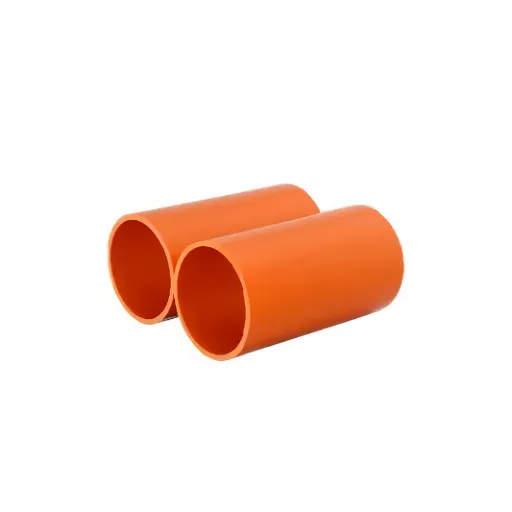
Resistance to Corrosion and Environmental Factors
Considered an optimal choice for underground and above-ground installations in difficult environments, HDPE pipes are well recognized for their exceptional corrosion resistance. HDPE, unlike metal piping systems, does not rust or suffer from any unwanted electrochemical reactions in the presence of acidic or alkaline soils. Hence, it requires reduced maintenance and ensures longer service life.
HDPE pipes maintain strong resistance against nearly all environmental exposures. Making it non-hygroscopic means that it does not absorb moisture, hence removing all dangers related to water ingress or freeze-thaw cycles. Being highly inert, HDPE plastics preserve their structure and chemical integrity in the presence of aggressive chemicals, such as salts, solvents, and industrial effluents. Laboratory and field data on performance show that HDPE pipes would retain sonic functionality for decades, even when under continuous exposure to some harsh substances.
Resistance to photodegradation is one of the HDPE pipes characteristics, where, with the addition of carbon black, the pipes behave very well when subjected to UV radiation while in outdoor environments. These additives provide a barrier against molecular degradation and surface cracking caused by prolonged exposure to sunlight.
Such features make HDPE pipes the ideal solution for today’s infrastructural needs. These pipes work reliably under different operational conditions and at the same time cause minimum lifecycle costs.
Long-Term Cost-Effectiveness Compared to Alternatives
HDPE pipes have their cost advantages over conventional ones made from steel, concrete, or even PVC. Due to its long service life and minimal maintenance requirements, HDPE pipes are considered the most cost-effective. Studies show that the average life of HDPE pipes is more than 50 years under normal operating conditions, thus longer than many alternatives. This ability to last then gives them perhaps fewer occasions for replacement and subsequent saving in costs.
They also offer unique advantage against chemical corrosion and environmental stress cracking-a problem for all metallic and some concrete pipes. Preventing such damage means the pipes need fewer costly repairing exercises, particularly in environments that cause chemical aggression or stress. The weight alone would also pose an advantage to the selection of HDPE since it brings down transportation and installation costs, requiring less special equipment compared to heavier ones such as germinize iron or concrete.
HDPE pipes have an edge over counterpart pipes from the perspective of lifecycle and total cost of ownership (TCO). These include lower energy costs during production, ease in installation, and fewer operational expenses during functioning. All of these factors make HDPE pipes a preferred choice in modern-day piping infrastructures.
Comparison with Traditional Materials: PVC and Metal
HDPE electric conduit pipes must be better because they provide more flexibility, corrosion resistance, durability, are cheap, and have a lower ecological footprint when compared to PVC and metals.
| Aspect | HDPE | PVC | Metal |
|---|---|---|---|
| Flexibility | High | Moderate | Low |
| Anti-Corrosion | Excellent | Moderate | Poor |
| Longevity | High | Moderate | High |
| Cost-Effectiveness | High | Moderate | Low |
| Eco-Friendliness | High | Moderate | Low |
Case Studies and Use Cases
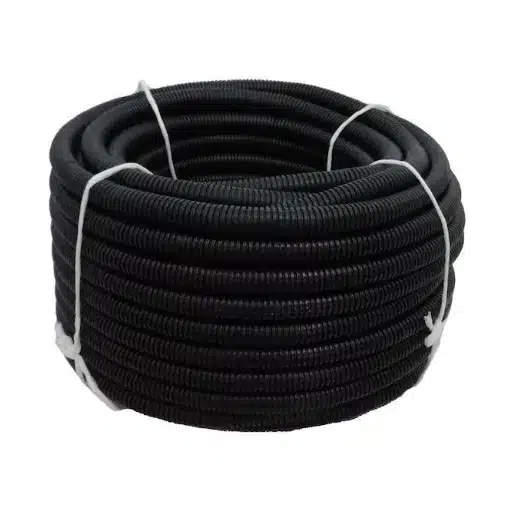
HDPE Conduit in Construction Projects
For the most part, due to the conjunction of structural advantages and sustainability, I would consider HDPE conduit as a foremost alternative among materials for construction-related work. I would turn to argue that this particular material can more readily provide flexibility, thereby enabling easier laying/installation in situations where the layouts are complex or involve curved or uneven surfaces. The lightness of the material further makes handling rather easier during transportation and installation, thereby reducing labor costs while increasing on-site efficiencies. It is an advantage I have seen more specifically realized in big infrastructural projects requiring such adaptability without compromising performance.
Another factor that really works in favor of the HDPE conduit is its resistance to corrosion and attack by chemicals. Metals tend to rust, whereas PVC may get degraded under certain circumstances of exposure; HDPE, on the other hand, maintains sound integrity for extremely long periods. Such dependability is demanded especially in construction projects carried out in extremely difficult weather conditions, for instance, where there is heavy moisture in the air, or the site contains acidic soils or temperature ducts. During the execution of a water distribution network project, HDPE had been an asset in promoting staying power and limiting the maintenance of the structure.
Lastly, HDPE conduit scores high on the cost-effectiveness and eco-friendliness scale. Having a reasonably long lifespan and requiring low maintenance, it would cost less over its entire life cycle if measured against other alternatives, such as metal conduits of the traditional type. Environmentally, HDPE has a smaller carbon footprint in terms of recyclability and energy use during manufacture. From my viewpoint, the sustainability goal. Judging construction using HDPE fits the bill, making it the preferred design material for projects focusing on functionality and environmental responsibility.
Utility Applications of HDPE Pipes
HDPE pipes are versatile and the single most common option across industries due to their long life, corrosion resistance, and cost efficiency. Placed below are five applications of HDPE pipes with their descriptions on their relevance:
💧 Water Supply Systems
The use of HDPE pipes for potable water distribution is widespread due to their non-toxic nature, whereby they will not contaminate the water. It has a smooth inside surface that prevents clogging, thereby allowing a great flow rate with minimum pumping energy. Research has indicated that HDPE pipes could handle pressures of a maximum of 1000 psi; hence, these are used for water systems under high pressure in urban and rural places.
🏭 Sewage and Wastewater Management
Being highly resistant chemically as well as to abrasion, water, and waste disposal are the major areas of application for HDPE pipes. Their flexibility allows installation on difficult terrains, whereas leak-free joints ensure minimum risk of environmental contamination. According to field data, HDPE pipes reduce maintenance incidents by more than 30% vis-à-vis materials like concrete or clay.
⛽ Gas Distribution Systems
Distributing networks for natural gas and LPG downhill from HDPE pipes is widespread, given that high tensile strength levels allow them to be safe and reliable. Additionally, their properties prevent any chemical reaction to occur with the gas components, ensuring long-term performance, greater than 50 years, at a regulated environment.
🌾 Irrigation and Agricultural Systems
The agricultural sector regards HDPE pipes as suitable for drip and sprinkler irrigation systems owing to their lightweight nature, UV-resistance, and ease of transport. Studies have established that HDPE pipes may increase water conservation efficiency by as much as 40%, luring water-intensive agriculture with an inexpensive proposition.
🏭 Industrial Piping Solutions
HDPE is preferred in the chemical and mineral industries for slurry, chemical, and other aggressive substances intake. It provides the greatest resistance to high temperatures and corrosive materials, thus creating a system with longevity and reliability. Research states that HDPE piping solutions can reduce downtime in the industrial process by as much as 25% as compared to conventional steel pipelines.
These utility applications illustrate the supreme versatility and long-lasting benefits of HDPE pipes in infrastructure and industrial projects.
Renewable Energy Projects Utilizing HDPE
HDPE has become a material that plays a pivotal role in renewable energy projects for durability, flexibility, and excellent chemical resistance. It is being increasingly used in the field of solar, wind, and biogas infrastructure due to its adaptability to working environments. For example, HDPE pipes are being used very widely in geothermal heat exchange systems to efficiently circulate fluids through underground loops because of their thermal and corrosion resistance properties, guaranteeing best performance for long years in varying temperature and high pressure.
Moreover, HDPE conduits work as protective shells for electrical cables in a solar park, shielding valuable infrastructure from environmental degradation and damage. Studies reveal that HDPE installations may reduce long-term maintenance charges up to 30% in comparison with conventional materials, thus greatly contributing to the economic sustainability of renewable energy projects. Lightweight property further aids the transportation and installation, minimizing labor and fuel costs, in tandem with the very goals of energy efficiency and carbon footprint reduction.
Across offshore wind farms, HDPE components are employed in durable cable protection systems for harsh marine conditions. Their resistance to saltwater corrosion and prolonged UV exposure humanizes these energy projects. In essence, the use of HDPE stands as a testament to its strategic implication in renewable energy systems for efficient, long-lasting, and cost-effective applications in this fast-developing industry.
Frequently Asked Questions (FAQ)
❓ What are HDPE electrical conduit pipes?
The HDPE Electrical Conduit pipe is one kind of protection conduit made up of high-density polyethylene for the protection of electric wires and cables. The pipes can resist corrosion and any chemical action, therefore, fit for any type of conduit application.
⭐ What are the advantages of high-quality HDPE conduit pipes?
High-quality HDPE conduit pipes provide strong durability with flexibility and environmental resistance. There are also many sizes and wall thicknesses available to match different installation needs while keeping costs low.
📏 What different sizes are available for HDPE electrical conduit pipes?
The pipes for HDPE electrical conduits are produced in various sizes, including normal Schedule 40 and Schedule 80 standards. This allows the pipes to be customized to suit particular project requirements and installation methods.
🔧 Can HDPE conduits be used for directional drilling?
Yes, HDPE electrical conduits are used in the directional drilling industry due to their flexibility and capability to resist bending until breaking. Such properties make them preferred for any underground installation.
📊 What importance does SDR have for HDPE conduits?
SDR is the Standard Dimension Ratio measured considering outside diameter versus wall thickness. For HDPE electrical conduits, the lower the SDR, the thicker the wall-greater durability and strength to resist pressure.
🔗 Are compression fittings fitting HDPE electrical conduit pipes?
Yes, compression fittings form secure connections with HDPE electrical conduit pipes. A compression fitting helps surface sealing, thereby preventing moisture or other contaminants from entering the conduit.
⚖️ What are the differences between HDPE and PVC conduits?
HDPE conduits are made from high-density polyethylene and have unrivaled corrosion resistance, whereas PVC conduits are made from polyvinyl chloride and are considered less flexible. HDPE is often preferred by many for its stiffness and environmental resistance.
🔨 How would one install HDPE electrical conduit pipes?
Methods of installing HDPE electrical conduit pipes include direct burial, directional drilling, and plowing. Proper installation of the conduits assures that the cables are well protected and that the conduits meet NEMA and UL standards.
🔌 What kinds of electrical cables can be installed inside HDPE conduits?
HDPE electrical conduits serve as a casing for many types of electrical cables, including CATV, telecommunications, and power distribution cables. These conduits have a smooth-wall and ribbed interior that makes cable installation a very easy process.
References
- 📘 Design Standard – Underground Piping Installations
The document from Texas A&M University establishes standards for underground piping, including the installation of HDPE pipes. - 📊 Evaluation of HDPE and PVC Pipes Used for
The study from Auburn University is concerned with the comparison of rigid and flexible pipes, including HDPE pipes. - 🔬 Durability and Reliability of Large Diameter HDPE Pipe
Research from The University of Texas at Arlington related to the performance and reliability of HDPE pipes.





